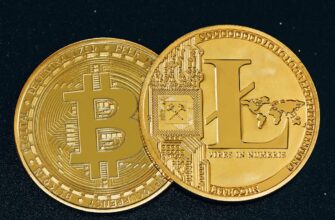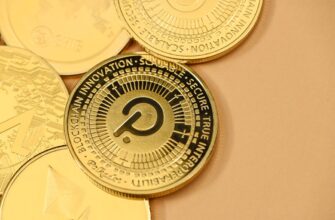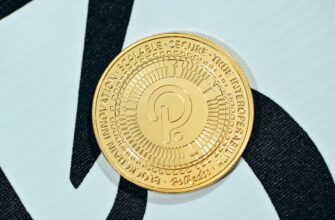- What Does “Cryptocurrency Equal to Dollar” Really Mean?
- Stablecoins: The Engine Behind Dollar-Equivalent Cryptocurrency
- Why Dollar-Equivalent Cryptocurrencies Are Revolutionizing Finance
- Top 5 Dollar-Equivalent Cryptocurrencies in 2023
- Navigating Risks in Dollar-Pegged Cryptocurrencies
- Practical Guide: Using Dollar-Equivalent Crypto
- FAQ: Cryptocurrency Equal to Dollar
- The Future of Dollar-Equivalent Cryptocurrency
What Does “Cryptocurrency Equal to Dollar” Really Mean?
When people search for “cryptocurrency equal to dollar,” they’re typically referring to stablecoins – digital assets designed to maintain a 1:1 value parity with the US dollar. Unlike volatile cryptocurrencies like Bitcoin, these dollar-pegged tokens offer price stability while retaining blockchain advantages. This fusion of traditional finance and crypto technology creates a powerful tool for seamless digital transactions, hedging against volatility, and bridging fiat and crypto economies.
Stablecoins: The Engine Behind Dollar-Equivalent Cryptocurrency
Stablecoins achieve dollar equivalence through three primary mechanisms:
- Fiat-Collateralized: Backed by USD reserves held in banks (e.g., USDC, USDT)
- Crypto-Collateralized: Overcollateralized with other cryptocurrencies (e.g., DAI)
- Algorithmic: Uses smart contracts to adjust supply/demand (e.g., former UST)
Regular audits and transparent reserves are critical for maintaining trust in these dollar-equivalent assets. Leading stablecoins publish monthly attestations from independent auditors to verify their 1:1 dollar backing.
Why Dollar-Equivalent Cryptocurrencies Are Revolutionizing Finance
Stablecoins solve major pain points in both traditional and crypto markets:
- Instant Settlements: Transfer value globally in seconds 24/7
- Volatility Shield: Park crypto gains without converting to fiat
- DeFi Gateway: Earn yield through lending protocols and liquidity pools
- Low-Cost Remittances: Slash cross-border transfer fees by 50-80%
- Inflation Hedge: Dollar access for economies with unstable currencies
Top 5 Dollar-Equivalent Cryptocurrencies in 2023
- Tether (USDT): $83B market cap, launched in 2014
- USD Coin (USDC): $26B market cap, fully reserved by Circle
- Binance USD (BUSD): Paxos-issued, NYDFS-regulated
- DAI: Decentralized, crypto-collateralized stablecoin
- TrueUSD (TUSD): Real-time attestations on-chain
Navigating Risks in Dollar-Pegged Cryptocurrencies
While stablecoins offer stability, they aren’t risk-free:
- Counterparty Risk: Collateral mismanagement (e.g., 2022 UST collapse)
- Regulatory Uncertainty: Potential SEC classification as securities
- Depeg Events: Temporary loss of dollar parity during market stress
- Smart Contract Vulnerabilities: Code exploits in algorithmic models
Mitigate risks by choosing transparent, audited projects with strong governance.
Practical Guide: Using Dollar-Equivalent Crypto
Getting started involves three simple steps:
- Buy stablecoins on exchanges like Coinbase or Binance using fiat
- Transfer to self-custody wallets (e.g., MetaMask) for security
- Utilize for payments, trading, or earning yield in DeFi protocols
Major platforms like PayPal and Visa now support stablecoin transactions, accelerating mainstream adoption.
FAQ: Cryptocurrency Equal to Dollar
Q: Are dollar-equivalent cryptocurrencies legal?
A: Most jurisdictions permit stablecoins, but regulations vary. The EU’s MiCA framework and proposed US legislation aim to establish clear guidelines.
Q: How do I verify a stablecoin’s dollar reserves?
A: Check issuer websites for monthly attestation reports from auditors like Grant Thornton (USDC) or BDO (USDT).
Q: Can stablecoins lose their dollar peg permanently?
A: While rare for major players, depegs can occur. USDC temporarily fell to $0.87 during 2023 banking crises but recovered within days.
Q: What’s the difference between USDT and USDC?
A: USDT has broader exchange support but less transparency. USDC provides detailed reserve breakdowns but faced redemption issues during SVB collapse.
Q: Are there alternatives to dollar-pegged stablecoins?
A: Yes, Euro-pegged (EURT) and commodity-backed (PAXG for gold) options exist, though USD equivalents dominate 90% of the market.
The Future of Dollar-Equivalent Cryptocurrency
As central banks explore CBDCs and institutions adopt stablecoins for settlements, dollar-equivalent cryptocurrencies will likely become financial infrastructure. Their ability to combine dollar stability with blockchain efficiency positions them as critical tools for the next evolution of global finance. For investors and users, understanding these digital dollar proxies is no longer optional – it’s financial literacy for the digital age.








